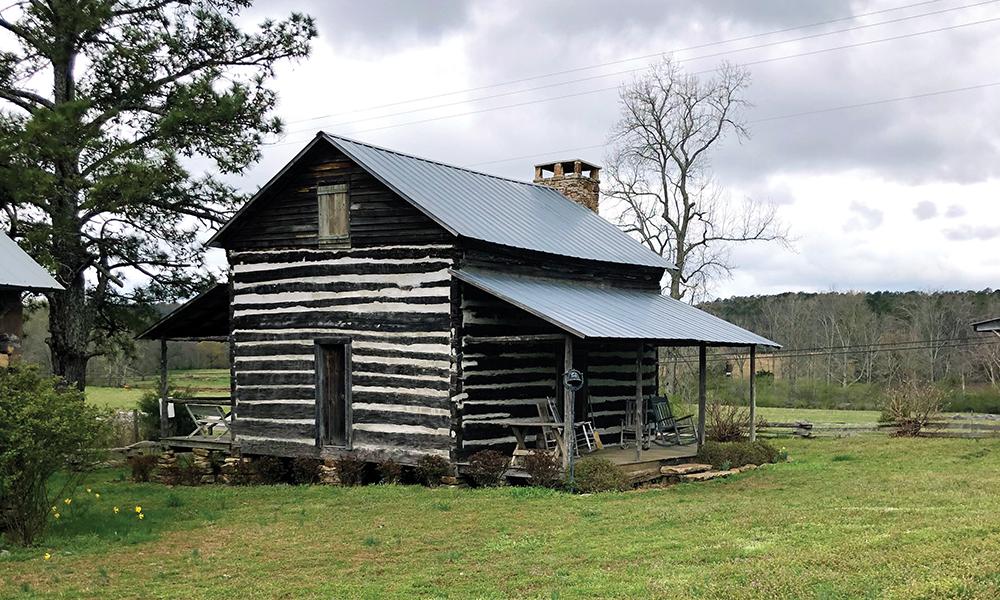
Making Amends With the Sins of Our Forefathers
Natalie Burt found herself in the same situation many of us did in 2020 — with extra time on her hands during the pandemic shut downs.
Natalie Burt found herself in the same situation many of us did in 2020 — with extra time on her hands during the pandemic shut downs.
She became interested in her genealogy and began researching on ancestry.com. She also remembered that her grandfather had done some research of his own before his death. What piqued her interest as she sifted through the internet and the pages of her grandfather’s records were two brothers, Robert and Isham Chamblee, who were her great (times four) grandfather and uncle, respectively.
Research showed they moved to Alabama from North Carolina in the early 1800s and that they resided in an extant cabin. But what was this cabin, and why did the Chamblee brothers move together? She needed to find out more.
She made the haunting realization that Isham was a slave trader, and he was selling human beings from the front porch of the cabin in Alabama. Robert had a nearby watermill for grain.
Natalie got choked up as she retold the story of her discovery. She wondered how she could make amends for the sins of her forefathers. Many people would have stopped research there due to the shame and fear of what else they might uncover, but Natalie “wanted to do something,” she said, so she dug further. She discovered that the cabin was donated to Blountsville Historical Park in Blountsville, Alabama, and realized that she could go visit. Natalie gathered her family and planned a journey.
Her trip took place in 2021, which Pope Francis had proclaimed the year of St. Joseph — husband of Mary, stepfather of Jesus and terror of demons. The trip also happened to be during Lent and on the feast of St. Joseph, March 19.
Despite her discoveries and planned trip, there was still more. She later found out that her ancestors, the Chamblee brothers, died by suicide.
“It was a lot to take in,” she recounted. “I had so many questions. Did they feel accountable for the lives of the slaves?”
Due to the significance and timing of the Year of St. Joseph, Natalie and her family traveled to Alabama with the hopes of dedicating the cabin to the beloved saint. She FaceTimed family who could not attend so they could all pray together at the site. Attending with her family was her brother’s family from Indiana and a distant cousin, which made about 15 people.
They toured the property first. Natalie said it was surreal to see a chain on the door, which she was told was original to the cabin and used to restrain human beings waiting to be sold into slavery.
“The whole experience has been humbling,” she continued, “to find the sins of my forefathers and just to learn about the prejudice … I learned so much about how that mentality is passed down.” She added that we need to be mindful of conveying those messages to our children, since God created all people as brothers and sisters.
Natalie’s continued research eventually led to a man in Indiana with the last name Chamblee, and she knew the likelihood of him being a descendent of one of the enslaved Africans sold from the cabin.
She found out the man, who was a Catholic doctor, had passed away not long ago, but she was able to locate his sons who attended a Catholic church there.
“They gave me permission to contact them, and I told them the story.
I apologized for the sins of my ancestors, and I explained how I made the discovery,” she said.
Back at the cabin, one of the children in Natalie’s family accidentally left a St. Joseph prayer card behind. The owners of the property framed the prayer, and it now adorns a wall of the old structure.
“I’m hoping our prayers bring some peace,” she concluded. “It’s a reminder of how slavery touched so many lives — even still today.”
Theresa Stratford is a freelance writer for The Miscellany. She lives in Charleston with her husband and three children and attends Cathedral of St. John the Baptist. Email her at tmmart89@gmail.com.



